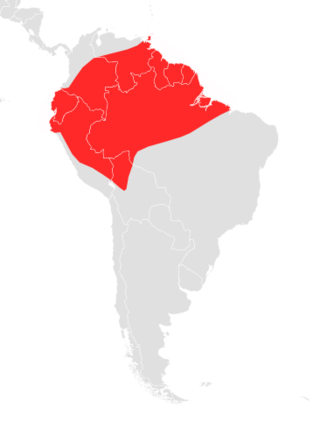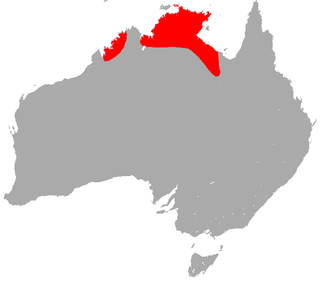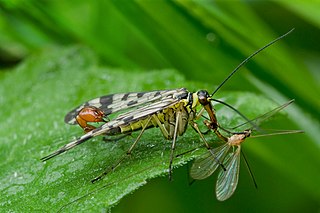
A shoe size is an indication of the fitting size of a shoe for a person.

The blue-tailed damselfly or common bluetail is a damselfly, belonging to the family Coenagrionidae.

The lesser long-tongued bat, also called the lesser long-tailed bat, is a bat species from South America.

The Recife broad-nosed bat, is a species of bat from South America. It is named for the city of Recife in Brazil, where it was first recorded by Oldfield Thomas in 1901.

The giant golden mole is a small mammal found in Africa. At 23 centimetres (9.1 in) in length, it is the largest of the golden mole species. The mole has dark, glossy brown fur; the name golden comes from the Greek word for green-gold, the family Chrysochloridae name.

The Moroccan rock lizard is a species of lizard in the family Lacertidae. Its classification is uncertain and it has been placed in the genera Teira, Podarcis, Lacerta or Scelarcis. It is found in Algeria and Morocco and has been introduced to the island of Menorca in Spain. Its natural habitats are Mediterranean-type shrubby vegetation, rocky areas, sea coasts and urban areas.

The Inyo shrew is a species of shrew found in the western United States. It is light gray and white in color, with a narrow skull and small body size, very similar in appearance to the related dwarf shrew, but paler and not as large. It can be found in many different habitats, from rocky, mountainous regions to wetlands and riparian areas. Not much is known about its behavioral and reproductive habits. While barely studied, their population is believed to be stable and not under any threat.

The northern leaf-nosed bat is a micro-bat of the family Hipposideridae, known as "leaf-nosed" bats. The species is endemic to northern regions of Australia. They are highly manoeuvrable in flight, and use echolocation to forage for insect prey.

Mitopus morio is a species of harvestman arachnid belonging to the family Phalangiidae.

Panorpa communis, the common scorpionfly, is a species of scorpionfly.

Coleophora serratella is a moth of the family Coleophoridae. It is found in Europe, Japan (Hokkaido) and North America.

The salmon louse is a species of copepod in the genus Lepeophtheirus. It is a sea louse, a parasite living mostly on salmon, particularly on Pacific and Atlantic salmon and sea trout, but is also sometimes found on the three-spined stickleback. It feeds on the mucus, skin and blood of the fish. Once detached, they can be blown by wind across the surface of the sea, like plankton. When they encounter a suitable marine fish host, they adhere themselves to the skin, fins, or gills of the fish, and feed on the mucus or skin. Sea lice only affect fish and are not harmful to humans.
Jurahylobittacus is an extinct genus of hangingfly in the family Bittacidae and containing a single species Jurahylobittacus astictus. The species is known only from the Middle Jurassic Jiulongshan Formation, part of the Daohugou Beds, near the village of Daohugou in Ningcheng County, northeastern China.

Agonum ericeti is a species of ground beetle in the Platyninae subfamily that can be found in all Europe except for Spain and Portugal.
Ichthyophis moustakius, the Manipur moustached caecilian, is a species of caecilian in the family Ichthyophiidae. It is endemic to Northeast India. This species exhibits broad lateral yellow stripes from the anterior part of its tail, along its mandibles, between its nares, as well as elsewhere. The animal can reach a length of 300 millimetres (12 in). Its head is somewhat U-shaped and fairly short; scales are absent on its collars. The species' name is derived from the Greek word moustakius, meaning "moustache", due to the yellow arched stripes it possesses.
Acanthogonatus parana is a mygalomorph spider of Argentina, its name referring to its type locality: Paraná, Entre Ríos. Females are most similar to those of A. centralis, but are distinguished by the narrow fundus of the spermathecae.

Zographus oculator, the Orange-eyed Long-horn Beetle, is a species of flat-faced longhorn beetles belonging to the family Cerambycidae.

Novomessor ensifer is a species of ant endemic to Mexico. A member of the genus Novomessor in the subfamily Myrmicinae, it was first described by Swiss entomologist Auguste Forel in 1899. N. ensifer was originally a part of the genus Aphaenogaster until a recent phylogenetic study concluded that Novomessor was genetically distinct and should be separated. The ant is a medium-sized species, measuring 5.5 to 10 millimetres. The ant is ferruginous-colored in some certain parts of the body, and small workers (nanitics) in incipient colonies are noticeably different in color and body structure.
Illawarra is a monotypic genus of Australian funnel-web spiders containing the single species Illawarra wisharti. It was first described by Michael R. Gray in 2010, and has only been found in the Illawarra region of southern New South Wales. It is a member of the subfamily Atracinae, the Australian funnel-web spiders, a number of whose species produce venom that is dangerous to humans. The generic name comes from the Illawarra region where the spider was found. The species name wisharti honours Graeme Wishart, who collected many mygalomorph spiders in that region.

Neoitamus cyanurus, the common awl robberfly, is a species of 'robber fly' belonging to the family Asilidae.















